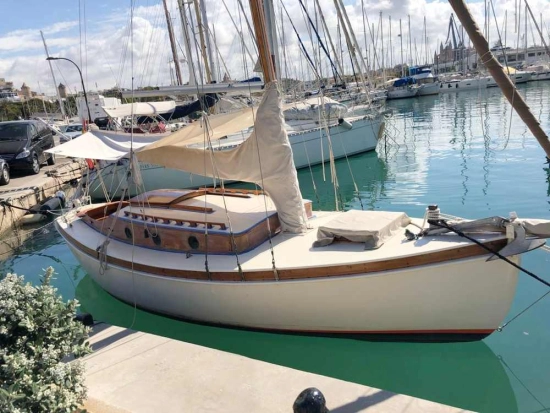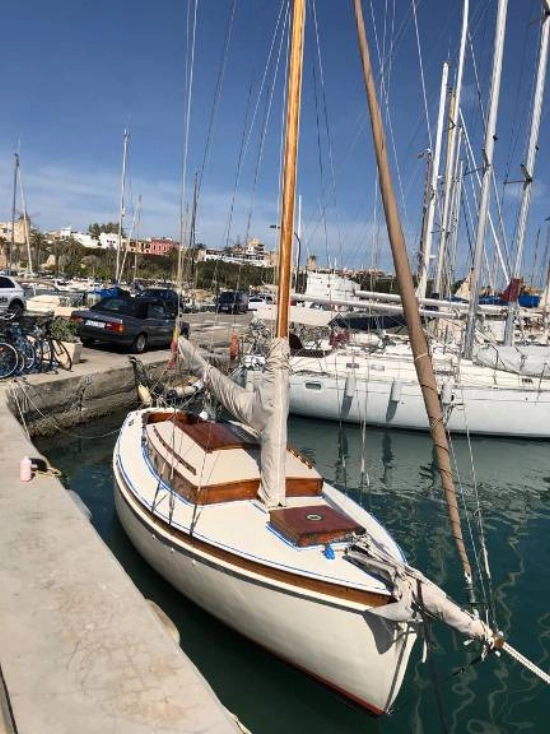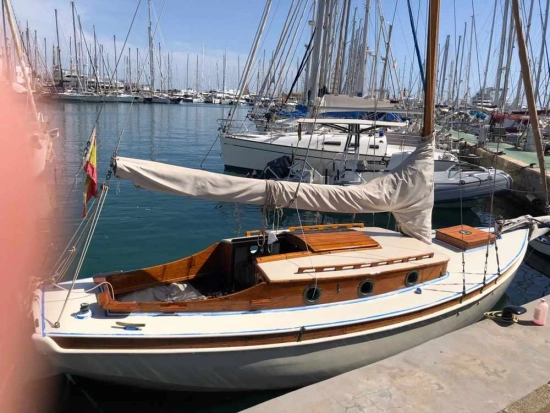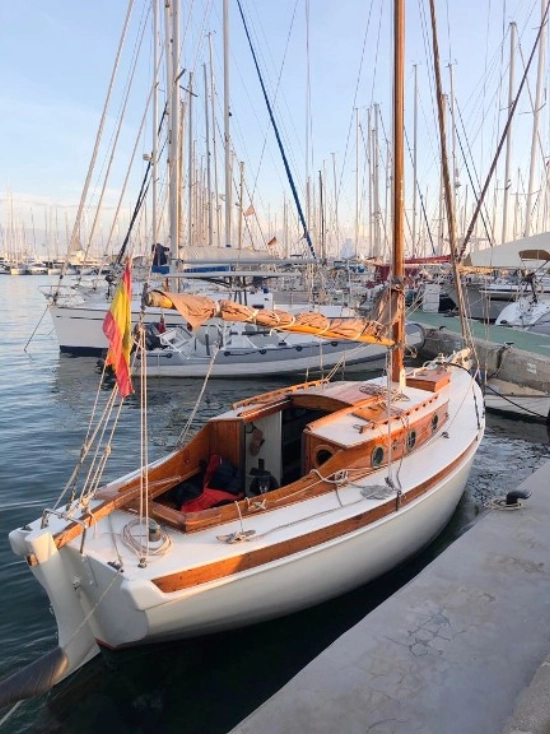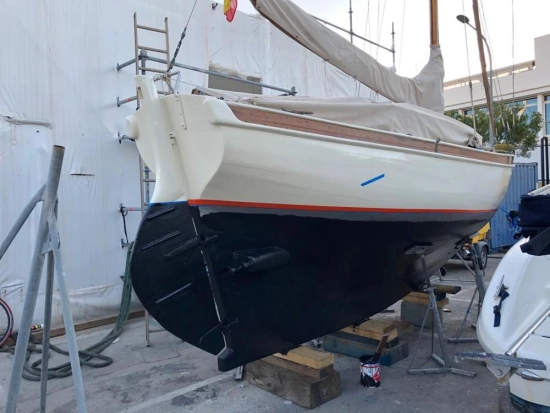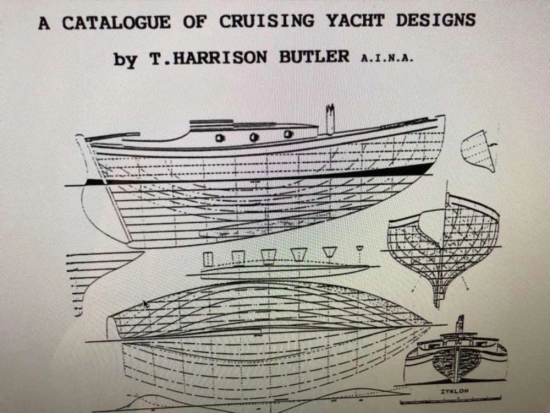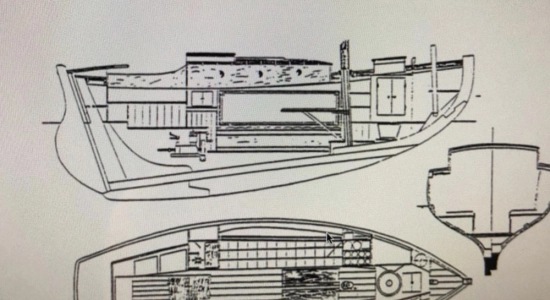Everson & Sons Z Class Harrison Butler usedPrice - 17.000 €
Beautiful boat, small but very capable
Sailboat Everson & Sons Z Class Harrison Butler used preowned of type cruiser racer from the year 1938 with 6.68 m length at Palma de Mallorca, Spain
The Everson & Sons Z Class Harrison Butler preowned is one of the 1938 shipyard models of the year 1938. It is a sailboat of type cruiser racer with a price of 17,000€. It has 6.68 m length and 2.2 m in beam. Everson & Sons Z Class Harrison Butler has 1 Solé Diesel engine(s) with 12 HP. It has 1 cabin(s). It is located in Palma de Mallorca, Spain. More data, details, equipment, and condition of this Everson & Sons Z Class Harrison Butler used for sale can be found below.
Everson & Sons Z Class Harrison Butler - Description
Dr. Thomas Harrison Butler (1871-1945) was an English ophthalmologist with a deep passion for sailing. So much so that he even designed his own sailing yachts. Butler was a convinced fautor of small boats that had to be excellent cruisers, even in the worst weather conditions. To this end, he became a proponent, probably the most famous, of the metacentric balance theory that Admiral Turner had developed in the 19th century. According to this theory, when a ship heels under the action of the wind, its balance depends on the shape of the hull, in which some sections, generally the stern sections, are more buoyant than others, generally the bow sections because they are thinner. The metacentric hull analysis summarises the windward and leeward displacement and buoyancy differences into a single value for each side. With this data, the designer can fine-tune the shapes so that the buoyancy values are equalised at the ends of the hull. Today this operation could be easily done with computer design programmes, although the validity of the formula has declined for various reasons (change of hull shape, statically calculated values without taking into account the dynamics of sailing, etc.). But it is a fact that all boats designed by T.H.B. (as he was familiarly called) are remarkably stable, balanced and very easy to handle.
The Z class was one of the first examples of series production sailing and was the brainchild of Captain O.M. Watts of London, who in 1937 asked Butler for a compact design, suitable for sailing in all conditions with a small, familiar crew. Butler slightly modified the design of his own boat, the Cyklon II (1928) of which a small and successful series had already been built. O. M. Watts then approached Alfred Lockharts who was the heir to a large furniture and timber trading company. Together they set up a shipyard in Bretford (Essex) for the mass production of the small sailing yachts, which were called Z-Class 4 t., after the size of the inner tonnage. For this purpose, they set up an innovative production line, inspired by the incipient automobile production, in which the different parts of the boat were built in series and stored together, before the actual construction. This was divided into twelve phases that benefited from the parts storage system and thanks also to the innovative "hull up" construction system, a section of four carpenters lined a hull in one week. In six weeks, the ship was finished and so 14 units were delivered in the first year of production (1938) and up to a total of more than forty before the outbreak of the Second World War brought production to a complete halt. After the end of the conflict, Lockharts was totally absorbed in the construction of furniture for the houses under reconstruction. A total of more than 50 units were built in the end, including different shipyards. There were notable differences in the range of rigging (Bermudan or gaff, with or without bowsprit), interior and fittings. But in all cases the sailing balance and smoothness of steering typical of Harrison Butler's boats stood out. The Cayuco, formerly known as Grey Owl, is one of the boats built by another shipyard at Woodbridge River Harbour in 1938. Her Bermudan sloop rig, with a bowsprit, gives her more agility than the reduced rig, without complicating manoeuvring for a small or solo crew. Its proverbial qualities of balance and stability, nowadays so surprising for those accustomed to modern boats, make it look like a blue water cruiser. And she is, although by our standards, the water and fuel capacities are more typical of a daily cruiser. Her current owner has meticulously restored her, using traditional techniques, to maintain the old-fashioned taste that shines through in every detail.
Everson & Sons Z Class Harrison Butler - Equipment
Pitch Pine on oak and elm frames and keelson
